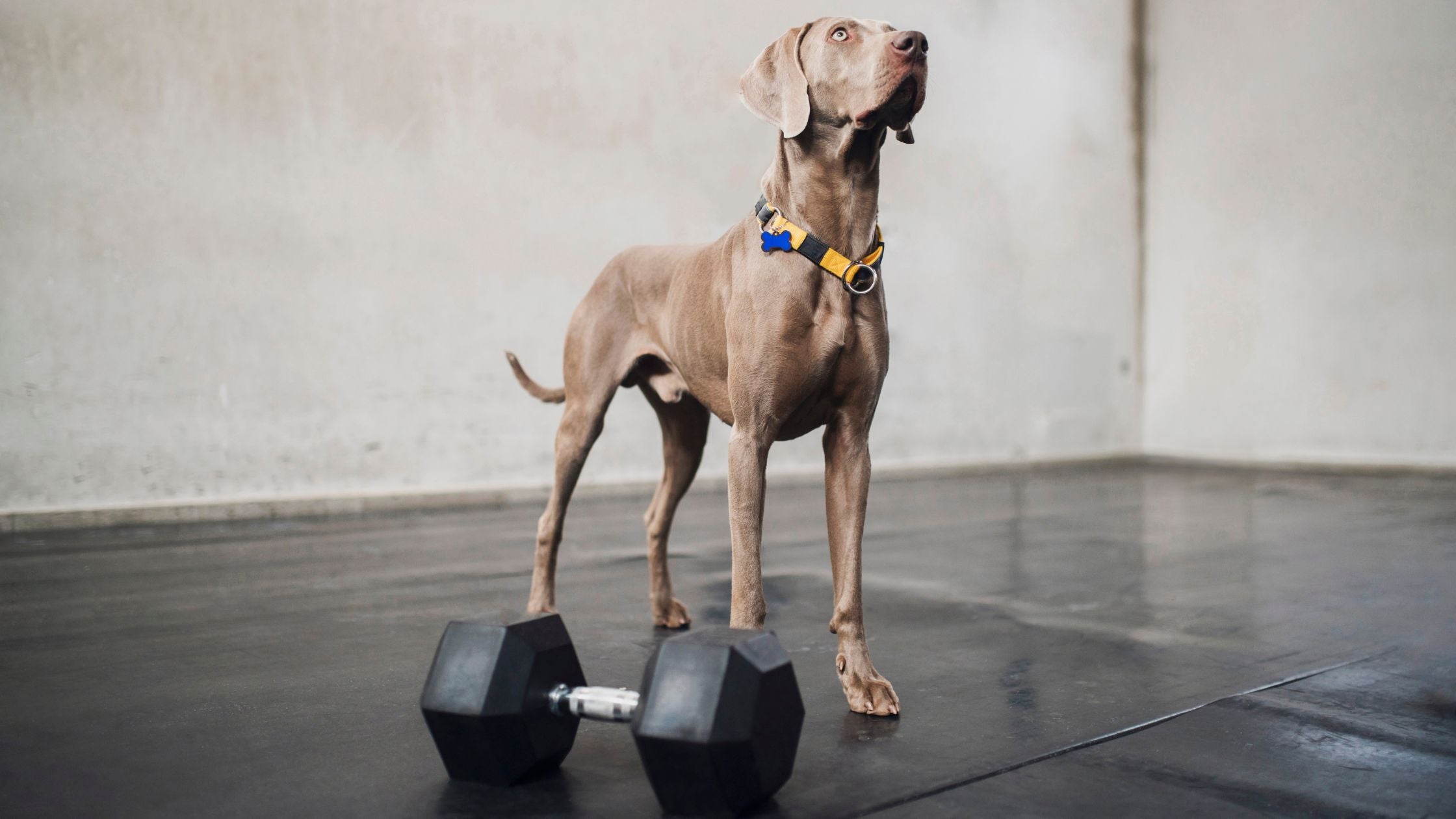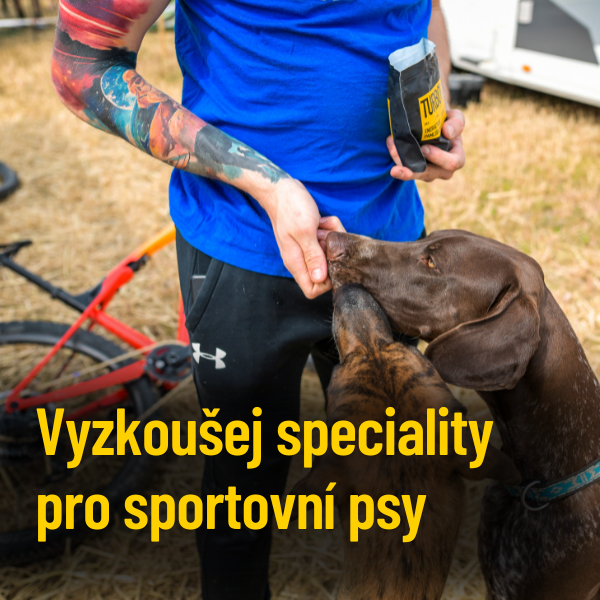Muscle building in dogs

Muscle gain in dogs
A few words of introduction: A puppy needs time
Before you start exercising, keep in mind that your puppy is still developing and their musculoskeletal system is still developing. Up until one to two years of age (depending on the type of activity ) , all physical activity should be more of a form of play. Enjoy your time together and leave more intense training for an adult dog.
1. Does your dog really need to gain weight?
Not every dog has to be a bundle of muscle. It's important to understand that every breed has a different body structure and ideal fitness level. How do you know if your dog is malnourished or in good shape?
-
Malnourished dog: All ribs visible, a protruding spine, or sunken hips. The dog may be tired, have a dull coat, and low energy.
-
Normal weight: The body frame is obvious, but the ribs are palpable with gentle pressure. The dog is active, has a healthy coat and a good appetite. In sporting dogs, the last 2-3 ribs are visible.
If you are unsure, consult your veterinarian about your dog's condition. Remember that a dog should be healthy and happy, not a tool for fulfilling aesthetic desires.

2. Why are muscles important?
Strengthening your muscles isn't just about appearance. It significantly helps improve your dog's health:
-
Support for the skeleton and musculoskeletal system: Strong muscles stabilize the musculoskeletal system and prevent injuries. Good form for a dog is the best prevention of joint and bone injuries and diseases. Simply put - muscles hold the skeleton and joints where they should be.
-
Cardiovascular health: Strength training increases endurance and helps maintain a healthy heart.
-
Immune system: Active movement improves the body's overall resistance.
-
Mental: Regular exercise reduces destructive behaviors like barking or destroying things. An untrained dog is likely to pee on your couch, door, or socks.
3. How to do it? Practical tips for exercising
Every breed is different and has its own specifics, but in general there are 4 universal exercises that will work the dog's most important muscles.
Swimming :
Swimming is a great exercise that strengthens the entire body. It mainly targets the muscles in the chest and front legs, which are not used as much when walking. The water also puts less strain on the joints, making it suitable for older dogs. Start with short 5-minute sessions and gradually increase the time in the water.

Dog in tow:
Pulling a load or a person (canicross) is one of the most effective ways to develop a dog's strength and endurance. This training helps in particular to strengthen the hind legs, back muscles and overall muscle tone. This type of training is ideal for working and sporting dogs, but also for active family dogs who need to strengthen their muscles and strengthen their musculoskeletal system.

Running/sprinting :
Regular running develops endurance and strengthens the muscles of the hind legs in particular. It is ideal to start at a calmer pace and gradually increase the intensity. Adjust the length of the route to the dog's condition and the terrain in which it runs.

"Dog clicks":
This exercise, in which the dog moves from sitting to lying down and back, is great for strengthening the core and hindquarters. Start with a few repetitions and gradually increase the number.
Note : Start slowly and gradually increase the load. Before each training session, warm up your dog with a light walk or game.
4. Proper Nutrition: The Foundation of Muscle
It won't work without a quality diet. The basis is:
-
Proteins: Helps restore and build muscle mass. You can add protein to kibble and raw food, for example with Recovery
-
Fats and oils: Fats are a dog's primary source of energy. They are most often found in oils - they should be a part of every dog's diet. Choose the right oil for dogs >> More about oils for dogs
-
Vitamins and Minerals: Important for muscle function, heart function and overall health. To provide a full spectrum of the most important vitamins and minerals, use Everyday Balancer . For even more immune support, try Imunovital.
Be careful ! Do not give dogs protein powders intended for humans - dogs have difficulty digesting them.
5. Regeneration is key
Muscles don't grow directly from exercise, but rather during recovery. Give your dog plenty of sleep and rest days between more strenuous activities. Remember, dogs need up to 16 hours of sleep a day!
6. When to start?
-
Puppy: The activity should be more of a playful form.
-
Adult dog: Ideal time for regular exercise and strengthening.
-
Older dogs: Maintain fitness to avoid destabilization of the musculoskeletal system






